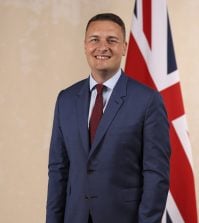Russian pay plan defeated by inflation

A six-year plan by the Russian government to raise the incomes of public sector workers is being badly undermined by rising inflation, according to a leaked report by Russia’s National University Higher School of Economics.
In 2012, President Putin published a set of presidential decrees covering the public sector. Among other policies, these introduced regional pay targets for various public sector professions, requiring that by 2018 each group’s average pay should be a certain percentage of the average income in each region. In a bid to close the 25-30 percentage point pay gap between the public and private sectors, Putin’s presidential decrees provided targets for doctors, teachers, academic researchers, associate professionals in the education, healthcare and science sectors, and some junior staff.
At the beginning of this month, the Russian government claimed that the presidential decrees are well on their way to realising their goals. But the National University’s report ‘Reallocation in the Russian labour market’ – which remains unpublished but has been seen by Global Government Forum – points out that in most cases the growth in public sector salaries has been wiped out by equivalent rises in the cost of living.
In some cases, interim targets have even been exceeded: doctors were to have been paid 130% of the average regional salary by 2015, but had reached 156% by the end of the year; and teachers, whose 2018 target was 100%, had already reached 106% by 1015. According to Russian state statistics agency Rosstat, in 2015 the average doctors’ wage was 48,000 rubles/month (USD$730), whilst the average teachers’ was R32,600 (USD$500).
Between 2012 and 2015, the average public sector salary rose by 35% in cash terms. However, inflation for the years 2012-15 exceeded 40%, and the researchers found that the average public sector worker’s purchasing power has returned to the level of early 2012.
Crucially, the university also found that the pay gap between public and private sectors remains at an average of 24-27 percentage points in almost all of Russia’s regions – so whilst rising public pay has broadly kept pace with inflation, salaries in the private sector have been growing in real terms. The main variations from this average gap lie in the North Caucasus, where the gap is smaller, and in those regions with large populations of young and old people – where smaller tax bases and higher public sector expenditure have depressed public wages, creating a bigger gap.
The presidential decrees have, however, resulted in a bigger pay gap within the public sector. Because the targets focused on skilled public sector workers – no goals were set for low-skilled and unskilled public staff – they have pulled public resources towards these people’s salaries, resulting in a narrowing of the pay gap between public and private sector skilled staff. Meanwhile, a new pay gap has opened up between public sector skilled and unskilled staff, creating a pattern much closer to that in the private sector. So the result of the decrees, researchers found, is to have redistributed income from poorer-paid to higher-paid public sector staff.
For up to date government news and international best practice follow us on Twitter @globegov
See also:
Research tracks gender equality among G20 officials
Female public servants in New Zealand ‘working for free’ until July, due to pay gap
New pay system saving Canada’s government $50m a year rolled out today
Civil servants’ pension payments pose challenge to Germany’s finances, report says
UK departments and professions to win pay freedoms
Experts predict consequences of 23% pay hike for India’s civil servants
Report shows gender pay gap up among New Zealand’s senior government leaders





















